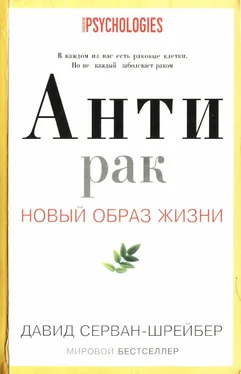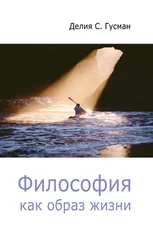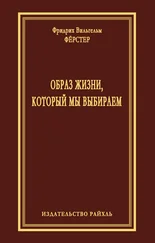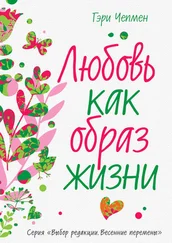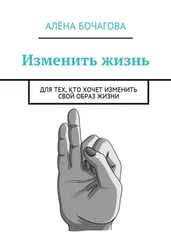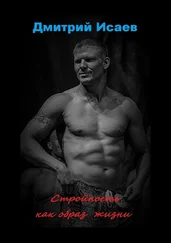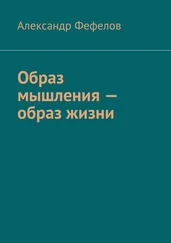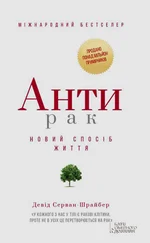Давид Серван-Шрейбер - Антирак. Новый образ жизни
Здесь есть возможность читать онлайн «Давид Серван-Шрейбер - Антирак. Новый образ жизни» — ознакомительный отрывок электронной книги совершенно бесплатно, а после прочтения отрывка купить полную версию. В некоторых случаях можно слушать аудио, скачать через торрент в формате fb2 и присутствует краткое содержание. Город: Москва, Год выпуска: 2010, ISBN: 2010, Издательство: РИПОЛ классик, Жанр: sci_medicine_alternative, Психология, на русском языке. Описание произведения, (предисловие) а так же отзывы посетителей доступны на портале библиотеки ЛибКат.
- Название:Антирак. Новый образ жизни
- Автор:
- Издательство:РИПОЛ классик
- Жанр:
- Год:2010
- Город:Москва
- ISBN:978-5-386-02111-5
- Рейтинг книги:4.26 / 5. Голосов: 34
-
Избранное:Добавить в избранное
- Отзывы:
-
Ваша оценка:
- 80
- 1
- 2
- 3
- 4
- 5
Антирак. Новый образ жизни: краткое содержание, описание и аннотация
Предлагаем к чтению аннотацию, описание, краткое содержание или предисловие (зависит от того, что написал сам автор книги «Антирак. Новый образ жизни»). Если вы не нашли необходимую информацию о книге — напишите в комментариях, мы постараемся отыскать её.
Антирак. Новый образ жизни — читать онлайн ознакомительный отрывок
Ниже представлен текст книги, разбитый по страницам. Система сохранения места последней прочитанной страницы, позволяет с удобством читать онлайн бесплатно книгу «Антирак. Новый образ жизни», без необходимости каждый раз заново искать на чём Вы остановились. Поставьте закладку, и сможете в любой момент перейти на страницу, на которой закончили чтение.
Интервал:
Закладка:
47. Thayer, J. F., and E. Sternberg, “Beyond Heart Rate Variability: Vagal Regulation of Allostatic Systems,” Annals of the New York Academy of Sciences 1008 (2006): 361-72.
48. Umetani, K., D. Singer, R. McCraty, et al., “Twenty-four Hour Time Domain Heart Rate Variability and Heart Rate: Relations to Age and Gender over Nine Decades,” Journal of the American College of Cardiology 31, no. 3 (1999): 593-601.
49. Dekker, Schouten, Klootwijk, et al., “Heart Rate Variability from Short-Term Electrocardiographic Recordings . . .”
50. Bernardi, Sleight, Bandinelli, et al., “Effect of Rosary Prayer and Yoga Mantras on Autonomic Cardiovascular Rhythms.”
51. Lutz, A., L. Greischar, N. Rawlings, et al., “Long-term Meditators Self-Induce High-Amplitude Gamma Synchrony During Mental Practice,” Proceedings of the National Academy of Sciences USA 101 (2004): 16369-73.
52. Davidson, R. J., J. Kabat-Zinn, J. Schumacher, et al., “Alterations in Brain and Immune Function Produced by Mindfulness Meditation,” Psychosomatic Medicine 65, no. 4 (2003): 564-70.
53. Rosenkranz, M. A., D. C. Jackson, K. M. Dalton, et al., “Affective Style and in Vivo Immune Response: Neurobehavioral Mechanisms,” Proceedings of the National Academy of Sciences 100 (2003): 11148-52.
54. Gruzelier, J., A. Burgess, T. Baldewig, et al., “Prospective Associations Between Lateralized Brain Function and Immunte Status in HIV Infection: Analysis of EEG, Cognition and Mood over 30 Months,” International Journal of Psychophysiology 23 (1996): 215-24.
55. Kiecolt-Glaser, J. K., R. Glaser, D. Williger, et al., “Psychosocial Enhancement of Immunocompetence in a Geriatric Population,” Health Psychology 4, no. 1 (1985): 25-41.
56. Creswell, J. D., Myers, H. F., Cole, S. W., Irwin, M. R., “Mindfulness Meditation Training Effects on CD4+T Lymphocytes in HIV-1 Infected Adults: A Small Randomized Controlled Trial,” Brain Behav Immun (2008).
57. Gawler, You Can Conquer Cancer.
58. Lillberg, K., P. K. Verkasalo, J. Kaprio, et al., “Stressful Life Events and Risk of Breast Cancer in 10,808 Women: A Cohort Study,” American Journal of Epidemiology 157 (2003): 415-23.
59. Price, M. A., C. C. Tennant, P. N. Butow, et al., “The Role of Psychosocial Factors in the Development of Breast Carcinoma: Part II: Life Event Stressors, Social Support, Defense Style, and Emotional Control and Their Interactions,” Cancer 91, no. 4 (2001): 686-97.
60. Bartrop, R. W., E. Luckhurst, L. Lazarus, et al., “Depressed Lymphocyte Function After Bereavement,” Lancet 1, no. 8016 (1977): 834-36.
61. Ironson, G., C. Wynings, N. Schneiderman, et al., “Posttraumatic Stress Symptoms, Intrusive Thoughts, Loss, and Immune Function After Hurricane Andrew,” Psychosomatic Medicine 59, no. 2 (1997): 128-41.
62. Irwin, M., M. Daniels, S. C. Risch, et al., “Plasma Cortisol and Natural Killer Cell Activity During Bereavement,” Biological Psychiatry 24, no. 2 (1988): 173-78.
63. Weisberg, R. B., S. E. Bruce, J. T. Machan, et al., “Nonpsychiatric Illness Among Primary Care Patients with Trauma Histories and Posttraumatic Stress Disorder,” Psychiatric Services 53, no. 7 (2002): 848-54.
64. Dong, M., W. H. Giles, V. J. Felitti, et al., “Insights into Causal Pathways for Ischemic Heart Disease: Adverse Childhood Experiences Study,” Circulation 110, no. 13 (2004): 1761-66.
65. Dew, M., R. Kormos, L. Roth, et al., “Early Post-Transplant Medical Compliance and Mental Health Predict Physical Morbidity and Mortality 1-3 Years After Heart Transplantation,” Journal of Heart and Lung Transplantation 18 (1999): 549-62.
66. Felitti, V., R. Anda, D. Nordenberg, et al., “Relationship of Childhood Abuse and Household Dysfunction to Many of the Leading Causes of Dealth in Adults,” American Journal of Preventive Medicine 14 (1998): 245-58.
67. American Psychiatric Association, Guidelines for the Psychiatric Treatment of Acute Stress Disorder and Posttraumatic Stress Disorder (Washington: American Psychiatric Association, 2004).
68. Bradley, R., J. Greene, E. Russ, et al., “A Multidimensional Meta-Analysis of Psychotherapy for PTSD,” American Journal of Psychiatry 162 (2005): 214-27.
69. Bisson, J. I., A. Ehlers, R. Matthews, et al., “Psychological Treatments for Chronic Post-Traumatic Stress Disorder: Systematic Review and Meta-Analysis,” British Journal of Psychiatry 190 (2007): 97-104.
70. Antoni, Lutgendorf, Cole, et al., “The Influence of Bio-Behavioral Factors on Tumour Biology.”
71. Reiche, E. M. V., S. O. V. Nunes, and H. K. Morimoto, “Stress, Depression, the Immune System, and Cancer,” Lancet Oncology 5, no. 10 (2004): 617-25.
72. Petrie, K., R. Booth, J. Pennebaker, et al., “Disclosure of Trauma and Immune Response to Hepatitis B Vaccination Program,” Journal of Consulting & Clinical Psychology 63 (1995): 787-92.
73. Zaslow, J., The Girls from Ames: A Story of Women and Friendship (New York: Penguin Group, 2009).
74. Parker-Pope, T., “What Are Friends For? A Longer Life,” New York Times , April 21, 2009.
75. Kroenke, C. H., et al., “Social Networks, Social Support, and Survival After Breast Cancer Diagnosis,” Journal of Clinical Oncology 24, no. 7 (2006): 1105-11.
76. Orth-Gomer, K., A. Rosengren, and L. Wilhelmsen, “Lack of Social Support and Incidence of Coronary Heart Disease in Middle-Aged Swedish Men,” Psychosomatic Medicine 55, no. 1 (1993): 37-43.
77. Lerner, Choices in Healing.
78. Solomon, S., E. T. Gerrity, and A. M. Muff, “Efficacy of Treatments for Posttraumatic Stress Disorder,” JAMA 268 (1992): 633-38.
79. Brady, K., T. Pearlstein, G. Asnis, et al., “Efficacy and Safety of Sertraline Treatment of Posttraumatic Stress Disorder,” JAMA 283 (2000): 1837-44.
80. Davidson, J. R. T., B. O. Rothbaum, B. Van Der Kolk, et al., “Multicenter, Double-Blind Comparison of Sertraline and Placebo in the Treatment of Posttraumatic Stress Disorder,” Archives of General Psychiatry 58 (2001): 485-92.
81. Asnis, G. M., S. R. Kohn, M. Henderson, et al., “SSRIs Versus Non-SSRIs in Post-Traumatic Stress Disorder: An Update with Recommendations,” Drugs 64, no. 4 (2004): 383-404.
82. van Etten, M.L. and S. Taylor, “Comparative Efficacy of Treatments for Post Traumatic Stress Disorder: A Meta-Analysis,” Clinical Psychology & Psychotherapy 5 (1998): 126-144.
83. Maxfield, L., and L. A. Hyer, “The Relationship Between Efficacy and Methodology in Studies Investigating EMDR Treatment of PTSD,” Journal of Clinical Psychology 58 (2002): 23-41.
84. Sack, M., W. Lempa, and F. Lamprecht, “Study Quality and Effect Sizes—a Meta-Analysis of EMDR Treatment for Posttraumatic Stress Disorder,” Psychother apie, Psychosomatik, Medizinische Psychologie 51, no. 9-10 (2001): 350-355.
85. Expertise Collective INSERM, et al., Psychothérapie: Trois approches évaluées, eds., INSERM Unité d’Evaluation et d’Expertise Collective, et al., Paris: 2004, Institut National de la Santé et de la Recherche Médicale France, 2004.
86. Shapiro, F., Eye-Movement Desensitization and Reprocessing: Basic Principles, Protocols and Procedures (New York: Guilford, 2001).
87. Kübler-Ross, E., On Death and Dying (New York: Touchstone, 1969).
88. Bisson, J. and M. Andrew, “Psychological Treatment of Post-Traumatic Stress Disorder (PTSD) (Review),” Cochrane Database of Systematic Reviews , no. 3 (2007): CD004046.
Читать дальшеИнтервал:
Закладка:
Похожие книги на «Антирак. Новый образ жизни»
Представляем Вашему вниманию похожие книги на «Антирак. Новый образ жизни» списком для выбора. Мы отобрали схожую по названию и смыслу литературу в надежде предоставить читателям больше вариантов отыскать новые, интересные, ещё непрочитанные произведения.
Обсуждение, отзывы о книге «Антирак. Новый образ жизни» и просто собственные мнения читателей. Оставьте ваши комментарии, напишите, что Вы думаете о произведении, его смысле или главных героях. Укажите что конкретно понравилось, а что нет, и почему Вы так считаете.
